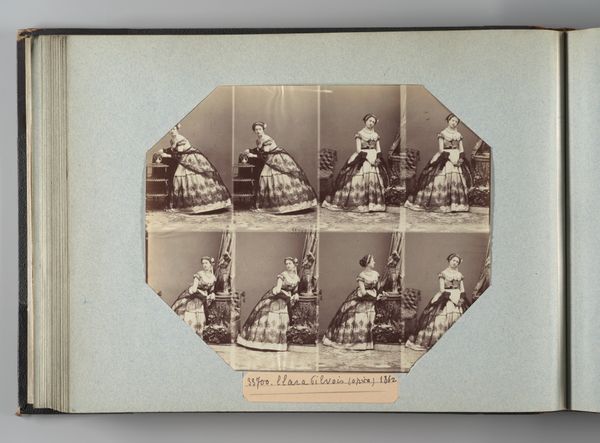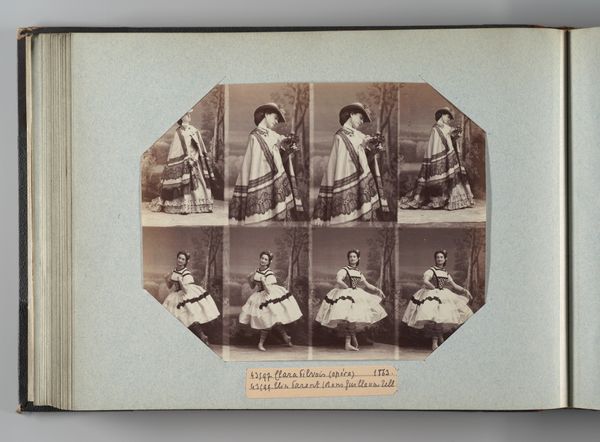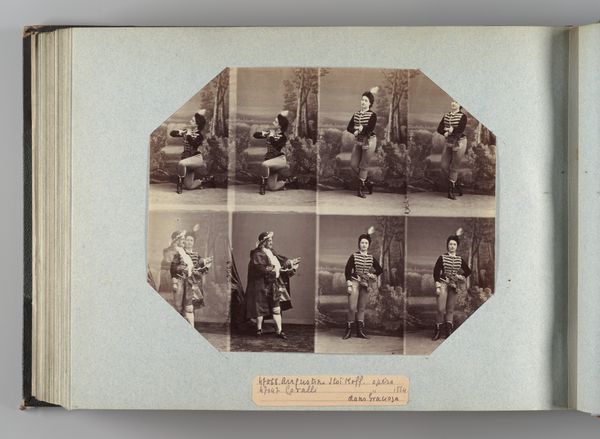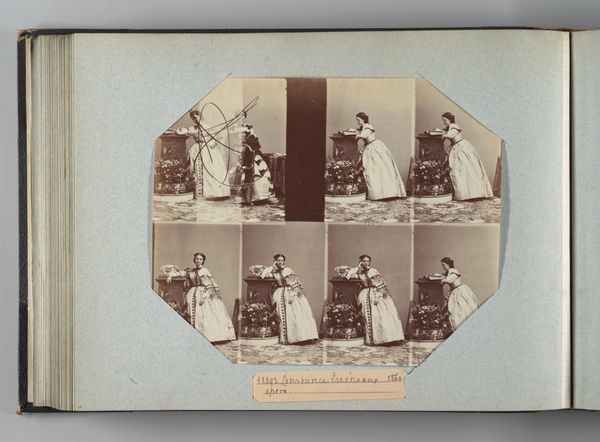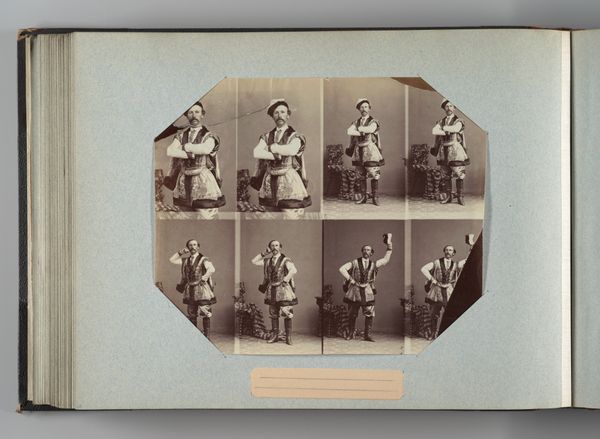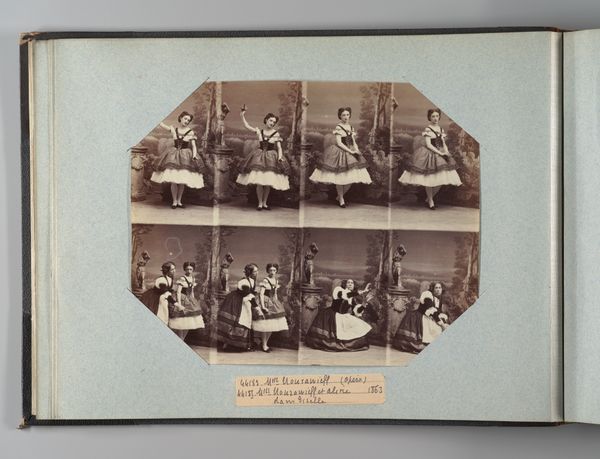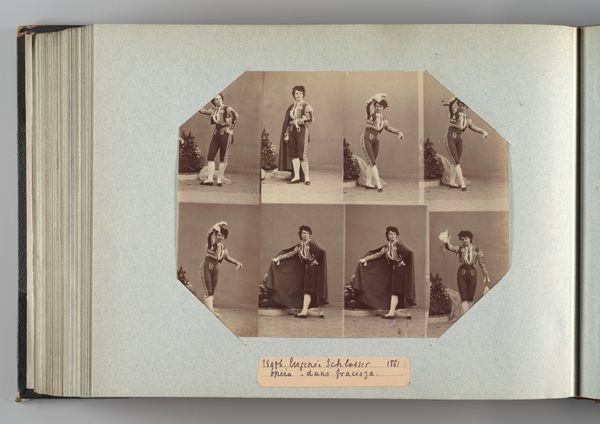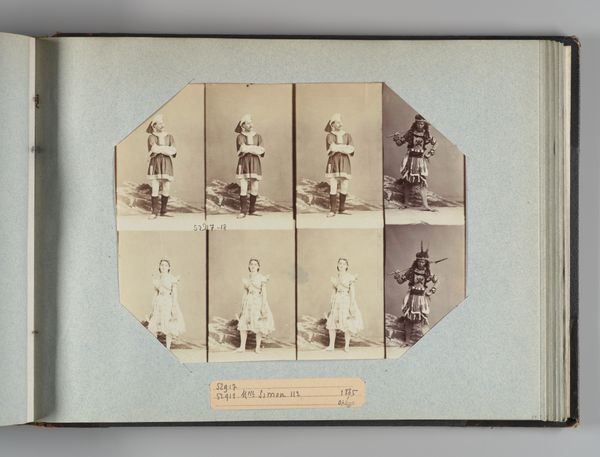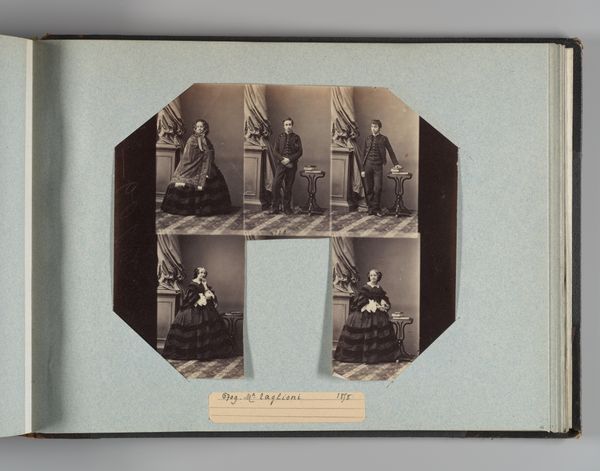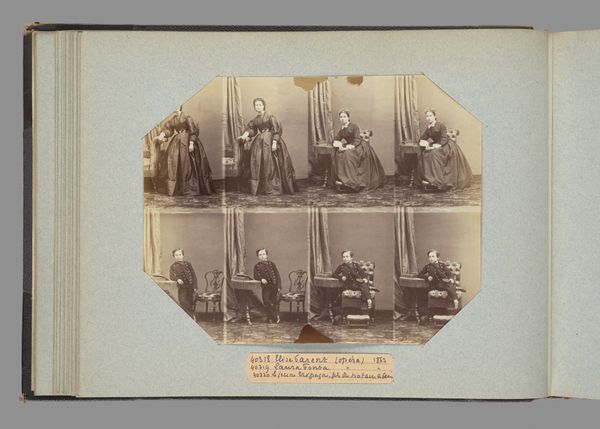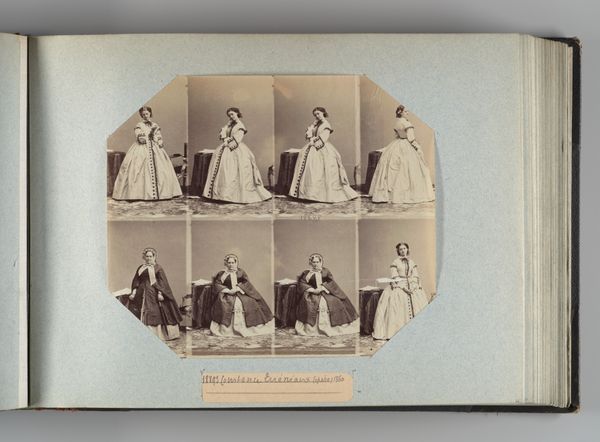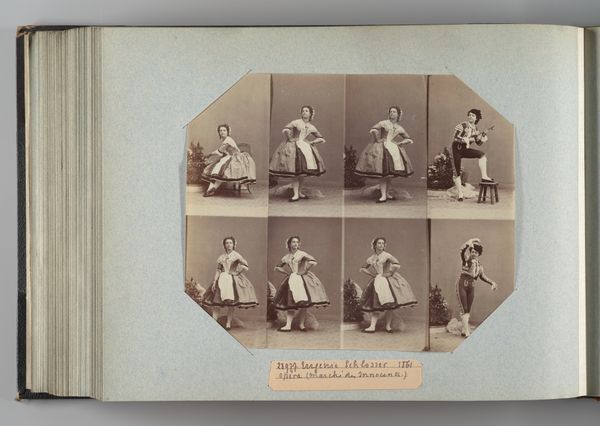
photography, albumen-print
#
portrait
#
photography
#
academic-art
#
albumen-print
Dimensions: Image: 7 3/8 × 9 1/4 in. (18.8 × 23.5 cm) Album page: 10 3/8 × 13 3/4 in. (26.3 × 35 cm)
Copyright: Public Domain
Editor: Here we have Andre-Adolphe-Eugene Disderi’s "M. Taglioni," an albumen print from 1878, residing at the Metropolitan Museum of Art. What immediately strikes me is the seriality of the images within one frame. What can you tell us about this artwork? Curator: Looking at this photographic print, it’s vital to consider the economic and industrial processes involved. Disderi was a master of carte-de-visite photography. He democratized portraiture, making it available to a wider audience, beyond the elite traditionally commissioning paintings. This album page, showing multiple poses, demonstrates industrialized portraiture. Editor: So, it's about accessibility through mass production? Curator: Exactly! The albumen print itself involved a specific chemical process dependent on industrial suppliers for materials. Also, consider the sitter’s attire. It speaks volumes about societal norms, the textile industry, and the performance of identity. What fabrics are used, how are they constructed, what does that say about the subject’s access to consumer goods and participation in those cycles of creation and purchasing? Editor: The clothing *does* seem to speak loudly of wealth. Are you suggesting the photographic process, along with other forms of materiality and costuming, challenge conventional class dynamics through commodity and its consumption? Curator: Precisely! And who has control over its production and distribution and access. The carte-de-visite format facilitated the circulation of images and social capital. And of course, beyond consumption there is also a significant amount of manual labor involved in photography – printing, developing, and the creation of chemicals that are rarely taken into consideration. It transformed the social landscape. This piece isn’t just a portrait; it's a record of material culture and evolving social structures. Editor: That makes me appreciate this image so much more, considering not just the final product but its context within production and material accessibility. Thanks for broadening my view. Curator: My pleasure. It’s essential to remember art is enmeshed with systems of labor, economics, and material conditions.
Comments
No comments
Be the first to comment and join the conversation on the ultimate creative platform.
